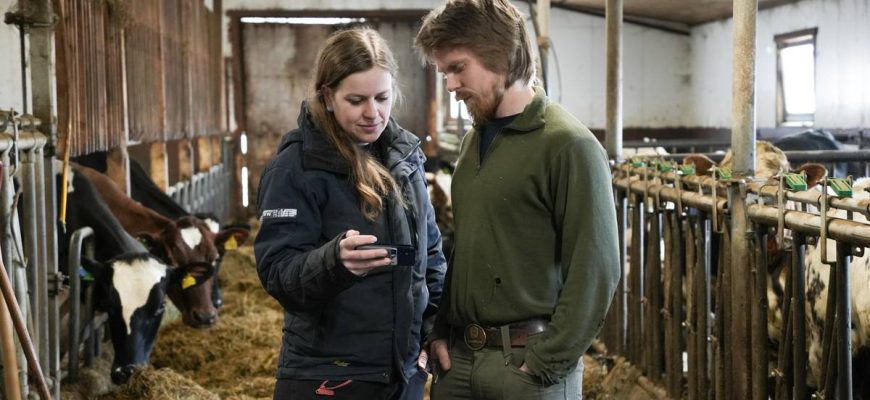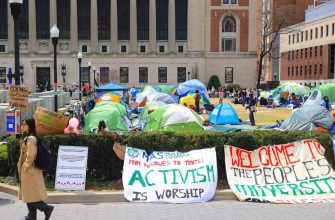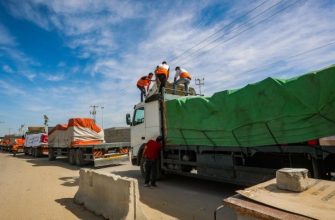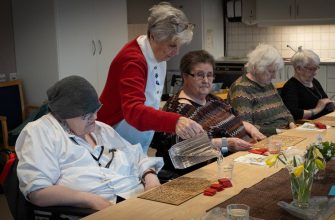On Friday morning at 11 o’clock, the farmers’ claims to the state in the agricultural settlement were delivered.
The farming organizations Norges Bondelag and Norsk bonde-småbrukarlag demand NOK 3.9 billion in this year’s agricultural settlement.
– It is quite special to present this year’s demands, it is only eight days after the Storting has decided that we must produce more food. We have been given a clear marching order, says leader of the Norwegian Farmers’ Association, Bjørn Gimming.
Smallholder association leader Tor Jacob Solberg refers to the demand as “sober”, based on assumed cost growth and the framework provided by the agricultural report recently processed by the Storting.
This is the lowest claim since 2021. Then the claim from the farmers was NOK 2.1 billion.
- In 2023, the farmers demanded NOK 6.9 billion.
- In 2022, the demand from the farmers was a record high NOK 11.5 billion.
Leader of the Norwegian Farmers’ Association, Tor Jacob Solberg.
Photo: Stian Lysberg Solum / NTB
Simply explained, the requirement is how much money the farmers think they need to be able to farm in the coming year.
Next week, the answer, or the offer, will come from the state – that is, how much money they put on the table for the farmers.
I think it is positive
Farmers Erling Bjørnson and Guro Lajord on Aulestad farm in Gausdal followed the agricultural settlement, even though they were in the middle of lambing.
– I think what is emerging is promising, that they will close half the income cupboard this settlement, and on milk and other forage-based productions, says Lajord.
Farmers Guro Lajord and Erling Bjørnson at Aulestad farm in Gausdal.
Photo: Aleksandr Nedbaev / NRK
She believes that it is those who deal with milk, have suckling cows and sheep who are struggling the most now.
– It is good that all rough fore-based productions will get a boost, but it is difficult to say the exact figure now. And then they mention welfare schemes, which I also think is very good, says Lajord.
She thinks it is very positive that opportunities for holidays, free time and leave are raised even higher.
Farmer Erling Bjørnson also thinks the requirement is promising, but expects it to be adjusted downwards.
– It is the same as last year. We have a good claim, and then the state often comes up with perhaps 30–40% of that. Then there is a bit of negotiation, and then that is what the result is.
– It will be exciting to see. It does, says Bjørnson.
– The demand is very high
Viil Søyland is the state’s head of negotiations. She believes that the demand from the farmers is very high.
She pointed out that we are above the worst peak in costs in general in society, and that in this way a lower demand could have been expected.
– Based on this, the demand that agriculture has put forward is very high, said Søyland.
Søyland pointed out that this year’s negotiations are connected with the plan for increased self-sufficiency, and the plan for stepping up income opportunities in agriculture, which was presented last week.
– Agriculture and the state will no longer negotiate on the development of agricultural income, but on the level of income, said Søyland.
Dairy farmer: – High hopes
Jon Fjeldet is a dairy farmer in Gausdal, and has 60 dairy cows with a milk quota of around 600 tonnes a year.
He is excited about this year’s agricultural settlement.
Jon Fjeldet is a dairy farmer on the farm Alme in Østre Gausdal.
Photo: Roar Andre Berntsen / NRK
– I have high hopes, as we have every year – and am usually disappointed. Now soon those who set our framework conditions must realize the seriousness, says Fjeldet.
He believes the seriousness of this year’s settlement is that he and the farmers will have an income like other people, considering the workload.
– That we can have a return on what we do. Have an income that allows us to live a normal life. We like everyone else, and don’t fly to our deaths, he says.
– Can have money to pay our bills, quite simply.
Dairy farmer Jon Fjeldet says he has no choice but to continue as a farmer.
Photo: Roar Andre Berntsen / NRK
In recent years, he has scaled up and made his own farm more efficient.
– But we feel it very well now, we who have taken the step, then, he says.
Even if he were to be disappointed in this year’s agricultural settlement, quitting as a dairy farmer is not an option.
– I have to continue, because I have invested and borrowed a lot of money. So I have no choice. And then you have to hope that it can be enough that you can continue in a normal way, says Fjeldet.
On the farm Alme, Fjeldet has 60 dairy cows.
Photo: Roar Andre Berntsen / NRK
Think they go out loud
Lene Westgaard-Halle, spokesperson for agricultural policy in the Conservative Party, believes that one cannot plan to transfer so much to farmers that it comes at the expense of other professional groups.
– Last year’s agricultural settlement was historically high, and the farmers are once again going both high and hard, she says.
Lene Westgaard-Halle, spokesperson for agricultural policy in the Conservative Party.
Photo: Heiko Junge / NTB
She says that they are taking note of the farmers’ demand.
– Now the negotiations with the government start. The Storting is not directly involved here, but we expect accountability, says Westgaard-Halle.
Business policy spokesperson in the Green Party, Rasmus Hansson, believes it is a sober demand from agriculture.
– Here it is quite clear that the farmers will show up for work to increase self-sufficiency and make agriculture greener, he says.
Business policy spokesperson in the Green Party, Rasmus Hansson.
Photo: Even Bjøringsøy Johnsen
– This requirement is so moderate that even if the entire requirement is met, many farmers will find it financially tough in the coming year. Now we will see if the government will keep its promise to ensure profitability and optimism on Norwegian farms, continues Hansson.
Negotiations underway
When the farmers have now submitted their claim to the state, this marks the start of the agricultural negotiations.
These are negotiations that take place over a few weeks between the farmers’ organizations and the state.
Among other things, price regulations and the distribution of budget support are being negotiated.
The Ministry of Agriculture and Food presents the government’s offer to agriculture on 6 May.
Negotiations must then continue until an agreement is reached. The deadline for the negotiations is 16 May.
The farmers campaigned
On Thursday last week, the Storting voted on the income calculation for farmers.
In advance of this, farmers all over the country took action, and many demonstrated in front of the Storting.
The farmers responded to the number of hours in this calculation, i.e. how many hours should form the basis of the farmers’ income.
For: Should a farmer’s working year have the same number of hours as a salary recipient year?
No, the government thought, but agreed to adjust from 1845 hours to 1750. The farmers demanded 1700, which is the usual for wage earners.
Many farmers gathered in front of the Storting last week to demonstrate.
Photo: Stine Bækkelien / NRK
While the proposal that the income gap between agriculture and other groups should be closed by 2027, was rejected.
- In March, the government also presented a plan for increased self-sufficiency, but many farmers were not satisfied with the economics of this plan either:
Published
26.04.2024, at 10.10
Updated
26.04.2024, at 13.53








